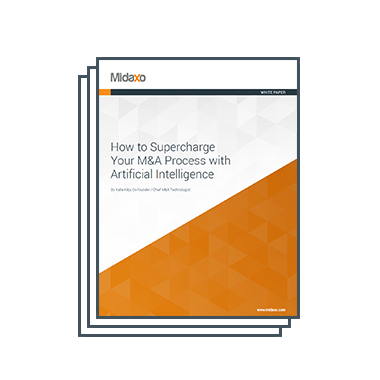Intro:
The focus on outcomes in M&A and corporate dealmaking highlights the importance of a robust deal thesis, also known as an investment thesis. As the saying goes: to maximize potential, “begin with the end in mind.” So, how does one develop an effective deal thesis? There are two common approaches: a deal-specific approach and one that considers a program of multiple acquisitions. Below we define what makes a concrete deal thesis, compare the merits of a single deal thesis and one designed for a program of multiple acquisitions, and identify how certain tools can help with this crucial aspect of M&A and the corporate dealmaking process in general.
What is a deal thesis?
A deal thesis in corporate development and M&A assesses and speaks to the value of an acquisition against clear objectives and benchmarks set by the buyer. A target may offer different things to different potential acquirers. The right buyer for a target should be confident that their deal thesis supports extracting and, in turn, delivering the most value.
Deal Thesis: Single Deal vs. Comprehensive M&A Program
A single deal or deal-specific thesis is unique and focuses on a single acquisition target, with the goal of identifying the potential benefits and risks of that one transaction. This approach is often used by strategic buyers, who are looking to acquire a company that will help them achieve particular business objectives, such as access to new markets or technology, or bringing a key competitor under their umbrella of influence.
In contrast, a thesis for a comprehensive M&A program of multiple acquisitions is typically used by private equity-backed platform companies, serial acquirers, or dealmakers with roll-up strategies. These firms often have a predefined investment thesis that guides their acquisition strategy, such as focusing on certain industries or geographic regions. The goal of this approach is often to build a portfolio of companies that can be integrated and managed as a single entity, with the aim of generating value through cost synergies and operational improvements.
One key difference between these two approaches is the level of risk involved. A deal-specific thesis typically involves a higher level of risk, as it is focused on a single acquisition target that may not deliver the expected benefits. That being said, with a single deal thesis, one knows fairly definitively what drives value post transaction. In contrast, a thesis for an M&A program of multiple acquisitions typically involves a more diversified risk profile, as the portfolio of companies can help offset the risks associated with any individual acquisition.
Another key difference lies in the repeatability inherent in a comprehensive M&A program under one deal thesis. As each individual deal is completed and actual outcomes are assessed, a team can adjust its program thesis accordingly, which, in turn, increases the overall thesis accuracy. Examining these multiple deals collectively is therefore more valuable to future deal initiatives, mimicking the common premise that 1+1+1 = 4. The collective impact has a benefit beyond each individual deal, and this is the real value of the M&A program. Private equity companies do this quite well via roll-up platforms. They are able to have cookie cutter deal theses that are well-defined based on experience and successful value creation.
In short, a single deal thesis versus a thesis for a comprehensive M&A program (a stream of deals) is the difference between operating M&A activities in silos versus looking at them collectively within a defined program so experiential learnings can be leveraged to increase future success.
Ultimately, the decision between leveraging a deal-specific thesis and a thesis for a program of multiple acquisitions will depend on the specific goals and objectives of the acquiring company. For strategic buyers, a deal-specific thesis may be the best approach for achieving their business objectives. In contrast, private equity-backed platform companies may be better served by leveraging a thesis for a program of multiple acquisitions, as this approach can help them build a portfolio of companies that can be integrated and managed as a single entity.
How Can I Create a Realistic Deal Thesis?
Creating a realistic and detailed deal thesis increases opportunities for maximizing value creation via M&A. To do this, begin by defining your specific strategy and objectives and determining how this will allow you to add the most value to the target in focus. What are your drivers that make your deal thesis tick? Maybe it is an efficient backend or a good relationship with suppliers. Specifically, the most accurate and valuable theses, both single and for an M&A program, detail:
- Cross and upsell synergies – define the specific take-rates and prices for specific products in specific segments in specific markets to be achieved with specific resources…be specific!
- Cost synergies – define what specific IT systems and supporting personnel will be consolidated and/or phased out within a specific time frame and at a specific expense.
Which tools are used to create a deal thesis?
The M&A Machine — people+process+tools — needs all cylinders firing for the engine to successfully run. Leveraging an end-to-end tool allows practitioners to identify, qualify, bid, win, and integrate targets, all while remaining focused on the deal thesis. Traditional tools, such as Excel, have serious drawbacks due to the inherent lack of collaboration and communication challenges, combined with the potential loss of information as a deal progresses through the pipeline.
Midaxo offers a comprehensive corporate dealmaking platform that empowers everyone involved in a deal to collaborate, refine their process, and focus on the deal thesis.
Conclusion:
Having a clear deal thesis and understanding why you are the best buyer for a specific target are foundational for an acquisition. Remaining focused on the deal thesis throughout due diligence, integration, and post-integration is vital, using this thesis to create tangible actions to capture synergies. Deal thesis and corporate dealmaking productivity platforms can aid in thesis creation and assure a heightened, sustained focus on the deal thesis, ultimately allowing buyers to create an efficient M&A Machine.





